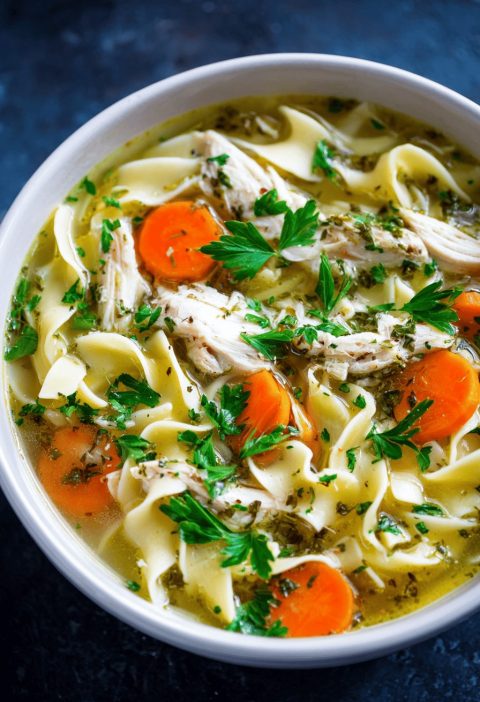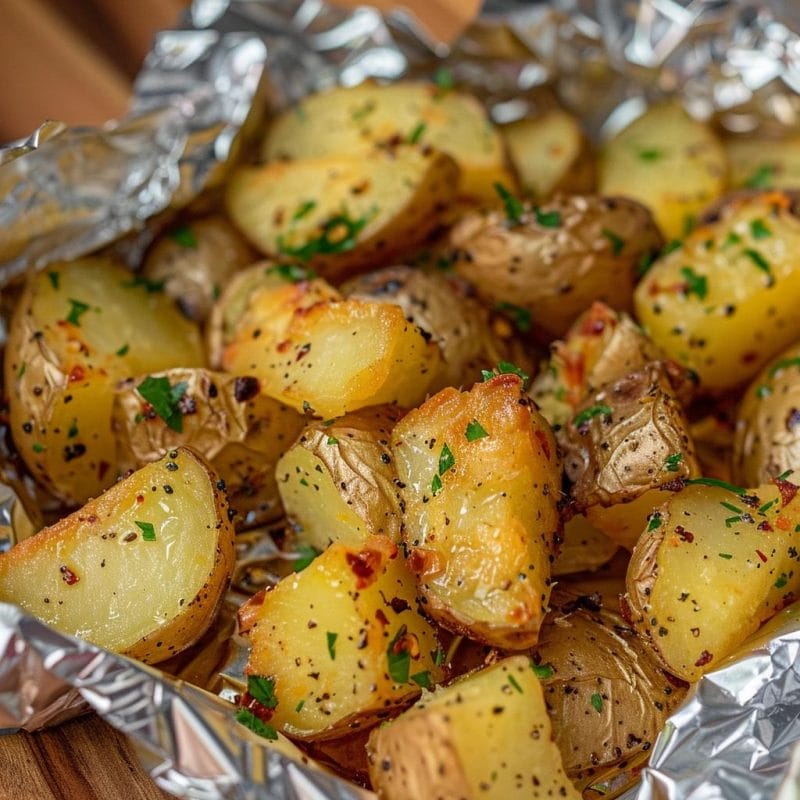Would you like to save this?
Pesto Recipe Recipe
Short Intro Paragraph
This Pesto Recipe Recipe brings you a vibrant, no-bake, healthy basil pesto sauce in under 10 minutes—perfect for pasta nights, grilled veggies, or drizzling over fresh tomatoes.
Full Recipe Introduction
Pesto is a classic sauce from Liguria in Italian cuisine, traditionally made by grinding fresh basil leaves, garlic, pine nuts, Parmesan, and olive oil in a mortar and pestle. What makes this homemade pesto special? It’s bright, herbaceous, and sugar-free, with healthy fats from extra-virgin olive oil and nuts. You’ll love how easy pesto is to whip up when basil is in season—think garden-fresh, aromatic green goodness. As a 50-year-old foodie who’s hosted dozens of summer cookouts and cozy Sunday suppers, I rely on this basil pesto to add zing without fuss. You know what? Even my grandkids love spooning it straight from the bowl.
H2 Why You’ll Love This Recipe
• Ready in under 10 minutes—no oven or stovetop required.
• Uses pantry staples plus fresh basil—minimal shopping.
• Naturally gluten-free, vegetarian, and sugar-free.
• Rich in vitamin K (over 200% DV per cup of basil) and healthy monounsaturated fats.
• Freezes beautifully—make a big batch when basil peaks.
• Versatile: toss with pasta, spread on sandwiches, or swirl into soups.
• Authentic traditional pesto flavor—straight from the mortar and pestle (or food processor!).
• Simple swaps let you tailor nuts, cheeses, or oils to your taste.
H2 Ingredients
• 2 cups fresh basil leaves (about one large bunch; pick leaves young for best flavor)
• ½ cup extra-virgin olive oil (choose a fruity, cold-pressed variety)
• ⅓ cup pine nuts, lightly toasted (substitute walnuts or almonds for budget-friendly homemade pesto)
• 2 garlic cloves, peeled (for a milder sauce, use one clove or roast them first)
• ½ cup freshly grated Parmesan cheese (Parmigiano-Reggiano or Pecorino Romano both work)
• ½ teaspoon fine sea salt (adjust to taste)
• ¼ teaspoon freshly ground black pepper
• Optional: 1–2 tablespoons lemon juice (brightens the sauce and helps preserve color)
H2 Directions
- Prepare your basil. Rinse leaves gently and pat dry—any extra water will dilute the sauce’s creaminess.
- Toast the nuts. In a small skillet over medium heat, swirl the pine nuts until they’re golden and fragrant (2–4 minutes). Watch them closely; they burn fast.
- Pulse garlic and nuts. In a food processor, combine garlic cloves and toasted pine nuts. Pulse 5–6 times until coarsely chopped—this helps release oils and flavor.
- Add basil and cheese. Toss in basil leaves, grated Parmesan, salt, and pepper. Pulse in short bursts, scraping down the sides as needed so everything mingles.
- Drizzle in oil. With the processor running on low, pour the olive oil through the feed tube until the pesto reaches a smooth-but-slightly-chunky texture. If you like it looser, add an extra tablespoon or two of oil.
- Taste and tweak. Scoop a small taste—does it need more salt, lemon juice, or cheese? Adjust one ingredient at a time for best balance.
- Store or serve. Transfer pesto to a glass jar, smoothing the top and adding a thin film of olive oil to prevent oxidation. Use immediately or chill for later.
H2 Servings & Timing
Yield
Makes about 1 cup of pesto—enough for 1 pound of pasta or four generous servings as a sauce or spread.
Timing
• Prep Time: 10 minutes (including toasting nuts)
• Total Time: 10 minutes
H2 Variations
• Walnut-Basil Pesto: Swap pine nuts for walnuts for a nuttier, budget-friendly twist.
• Vegan Pesto: Omit cheese and blend in 2 tablespoons nutritional yeast for a cheesy flavor.
• Spinach-Basil Pesto: Use half basil and half baby spinach to stretch the yield and add iron.
• Sun-Dried Tomato Pesto: Stir in ¼ cup chopped sun-dried tomatoes for a tangy kick.
• Arugula Pesto: Replace half the basil with peppery arugula for a zesty bite.
• Lemon-Mint Pesto: Add a handful of fresh mint leaves and extra lemon for a bright, springy sauce.
H2 Storage & Reheating
Refrigerator: Store pesto in an airtight container with a thin layer of olive oil on top; keeps 5–7 days.
Freezer: Spoon pesto into ice cube trays or small freezer bags; freeze up to 3 months.
Thawing: Pop a cube into warm pasta water or let it sit at room temperature for 15 minutes.
Make-Ahead: Blend pesto up to 2 days before serving—flavors deepen and marry overnight.
H2 Notes
• Mortar & Pestle vs. Processor: Crushing by hand brings out more aromatic oils in basil—if you have the patience, it’s worth the extra effort.
• Nut Overload: Too many nuts can overwhelm the basil flavor; stick to recommended ratios or go lighter if you prefer a greener sauce.
• Cheese Texture: Finely grate your Parmesan so it blends smoothly—no grainy surprises.
• Acid Test: Lemon juice isn’t traditional, but it keeps your homemade pesto fresh and vibrant, especially if you store it longer.
• Consistency Clue: Think of pesto like a loose paste that’s spoonable—add oil gradually to hit your ideal thickness.
H2 FAQs
Q: Can I skip the nuts?
A: Yes—omit them entirely or substitute with sunflower seeds if you have nut allergies; you’ll lose some richness but gain a lighter sauce.
Q: Is pesto healthy?
A: Absolutely—basil is packed with antioxidants and vitamin K, while olive oil provides heart-healthy monounsaturated fats.
Q: Why is my pesto bitter?
A: Over-processing basil or using older leaves can cause bitterness; try pulsing less and use bright-green, fresh leaves.
Q: How do I prevent pesto from turning brown?
A: Smooth a thin layer of olive oil on top of the pesto or press plastic wrap directly onto its surface before sealing.
Q: Can I use dried basil instead?
A: Fresh basil is key—dried won’t replicate that vivid flavor or texture in a pesto sauce.
Q: What cheese works best?
A: Parmesan or Pecorino Romano are traditional—avoid pre-grated blends, which often contain anti-caking agents that affect texture.
Q: How long does pesto last in the freezer?
A: Up to three months in airtight containers or ice cube trays—just thaw only what you need.
Q: Can I make pesto in advance for a party?
A: Yes—prepare up to 2 days ahead and refrigerate; bring to room temperature before serving.
H2 Conclusion
This Pesto Recipe Recipe is a beloved classic that’s as versatile as it is flavorful—bright basil, rich nuts, and savory cheese come together for an easy pesto you’ll want on everything. Give it a whirl tonight, and don’t forget to drop a comment sharing your favorite pesto pairing or any tasty tweaks you tried. Buon appetito!

Pesto Recipe Recipe
Ingredients
- 2 cups fresh basil leaves about one large bunch; pick leaves young for best flavor
- 1/2 cup extra-virgin olive oil choose a fruity, cold-pressed variety
- 1/3 cup pine nuts lightly toasted (substitute walnuts or almonds for budget-friendly homemade pesto)
- 2 cloves garlic peeled (for a milder sauce, use one clove or roast them first)
- 1/2 cup freshly grated Parmesan cheese Parmigiano-Reggiano or Pecorino Romano both work
- 1/2 teaspoon fine sea salt adjust to taste
- 1/4 teaspoon freshly ground black pepper
- 1-2 tablespoons lemon juice optional: brightens the sauce and helps preserve color
Instructions
- Rinse leaves gently and pat dry—any extra water will dilute the sauce’s creaminess.
- In a small skillet over medium heat, swirl the pine nuts until they’re golden and fragrant (2–4 minutes). Watch them closely; they burn fast.
- In a food processor, combine garlic cloves and toasted pine nuts. Pulse 5–6 times until coarsely chopped—this helps release oils and flavor.
- Toss in basil leaves, grated Parmesan, salt, and pepper. Pulse in short bursts, scraping down the sides as needed so everything mingles.
- With the processor running on low, pour the olive oil through the feed tube until the pesto reaches a smooth-but-slightly-chunky texture. If you like it looser, add an extra tablespoon or two of oil.
- Scoop a small taste—does it need more salt, lemon juice, or cheese? Adjust one ingredient at a time for best balance.
- Transfer pesto to a glass jar, smoothing the top and adding a thin film of olive oil to prevent oxidation. Use immediately or chill for later.







